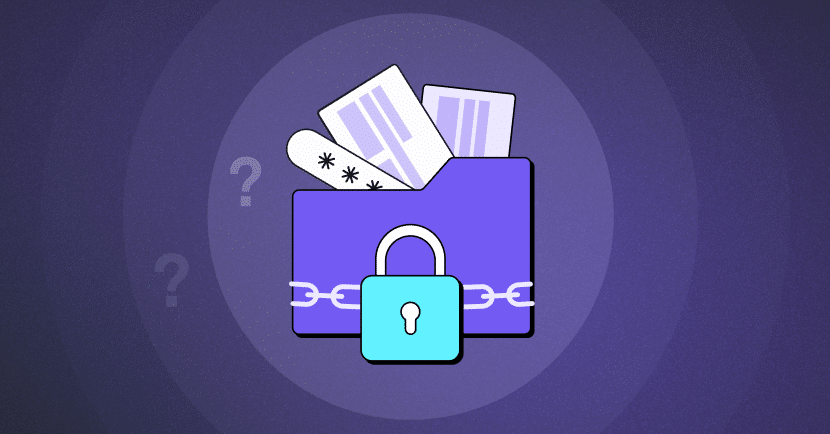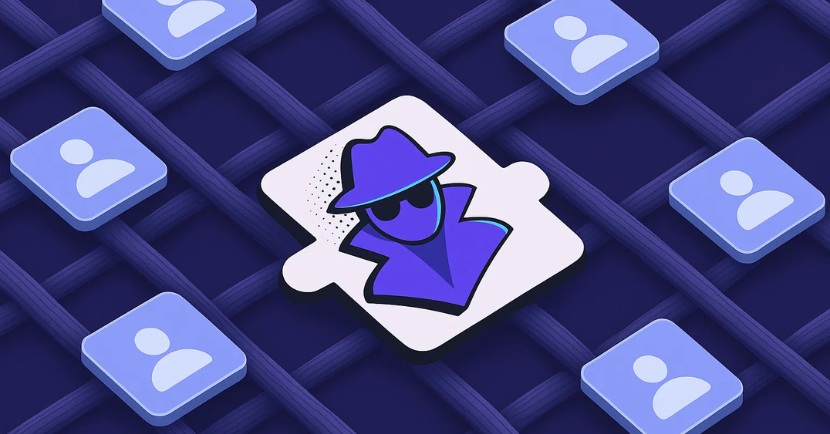Data Loss Prevention (DLP) solutions help enterprises protect sensitive information from unauthorized access or exfiltration. For example, ensuring that intellectual property, personal information, financial records, and health records, are not lost, misused, or accessed by unauthorized individuals. As such, DLPs are a key solution in the organization’s cybersecurity strategy and stack.
This blog post dives into the types of threats facing enterprise data: external attacks – like phishing and ransomware – insider threats, and risks from cloud storage or mobile devices. Then, we explain how a DLP solution can help enterprises by protecting against these threats: safeguarding intellectual property, ensuring regulatory compliance, providing comprehensive visibility into data flows, and more. At the end, we provide insights into choosing the right DLP solution for your needs.
Threats That Require DLP Solutions
The threat landscape for enterprise data is dynamic and diverse, making DLPs an important component in the enterprise security stack. These threats include:
Outside Threats
The most dangerous threats to enterprise data come from external types of attacks. Outside threats include:
- Phishing, or any other type of social engineering, when attackers disguise themselves as trustworthy entities. Typically, the goal is to trick individuals into revealing sensitive information, like login credentials or credit card numbers, which enable access into the network or provide them with sensitive data directly.
- Ransomware – A type of malware that encrypts a victim’s data and demands payment for the decryption key. Ransomware attacks can cripple enterprise operations, leading to significant financial losses and damage to reputation.
- Malware – Various types of harmful software, including viruses, worms, trojans, and spyware. These malicious programs can steal, delete, encrypt, or modify data; hijack or disable core computing functions; and collect information about the user’s computer activity. Enterprises are often targeted by sophisticated malware designed to evade detection and persist within systems to steal sensitive data.
- Supply chain risks – When attackers take advantage of vulnerabilities in the software supply chain. Attackers can exploit weak links in the supply chain to gain access to an enterprise’s systems. This could involve compromising a third-party vendor’s software or hardware, which is then used as a conduit to launch attacks on the primary target.
- Advanced Persistent Threats (APTs) – Complex, sophisticated attacks, often committed by nation state actors or highly organized criminal groups. APTs are characterized by their persistent nature and their focus on high-value targets, such as national defense, critical infrastructure, or financial sectors. These attacks typically aim to steal sensitive information over long periods of time.
Insider Threats
Insider threats are the threat of attacks that exploit insiders’ authorized access and deep understanding of the company’s systems and policies. For instance, an insider with access to confidential customer data could leak it to a third party, resulting in a data breach and damaging the reputation of the organization.
These threats can be inadvertent or intentional. Many times, human error is one of the leading causes of data breaches. Other times, insiders have malicious motives, including financial gain, revenge, or external coercion. Their internal access makes it easier for them to exploit vulnerabilities and carry out malicious activities, often without triggering standard security alarms.
The impact of insider threats on enterprise data can be severe, ranging from data integrity and availability issues to financial and reputational damage. In some cases, there could be legal ramifications, especially when compliance regulations are not followed.
Cloud Storage
Cloudification has introduced multiple advantages to enterprises, but also some notable risks:
- The primary concern revolves around data security and privacy. There’s a constant threat of data breaches, unauthorized access, or exposure, due to vulnerabilities in the cloud, misconfigurations, or inadequate security controls.
- Other risks include challenges in data management and control, raising concerns over data handling, access, and how data flows between environments. For example, handling confidential data that employees store in SaaS applications like Google Drive or DropBox.
Mobility Threats
The use of mobile devices for business has introduced new risks to enterprise data. These include:
- Data leakage through device loss, theft, or insecure data flow
- Vulnerability to cyber attacks and malware on the mobile device
- Exposure to unsecured networks
- Inadequate BYOD policies
- Outdated device software
- Social engineering attacks through social networks or text messages
How DLP Solutions Help Enterprises
Data Loss Prevention (DLP) solutions are valuable tools in the enterprise security stack. Here’s how DLP security solutions can assist enterprises in strengthening their data protection strategies:
- Intellectual Property Protection – A DLP helps protect trade secrets and proprietary information. This includes source code, copyrights, patents, and other types of data. By monitoring and controlling access to these assets, DLP ensures that only authorized personnel can use or share this sensitive information.
- Regulatory Compliance – Enterprises often operate under strict regulatory requirements that dictate the safeguarding of customer and client data. Data loss prevention solutions can help maintain compliance with regulations such as GDPR, HIPAA, and PCI-DSS. This is done by enforcing policies that protect regulated data and limit who can access it and which actions they take. They also provide visibility into where data is stored and how it moves in the network, which is also required.
- Insider Threat Reduction – DLP systems can mitigate insider threats by setting up rules that flag unauthorized attempts to move or share sensitive data, thereby preventing data leaks.
- Visibility into Data Flow – DLP tools provide visibility into where sensitive data resides in the enterprise, how it is being used, who is using it, and where it is flowing. This detailed visibility helps assess risks and improve security measures.
- Secure Collaboration – DLP solutions can facilitate secure collaboration both within and outside the organization by applying data protection policies to information shared via email, cloud services, and other collaboration platforms.
- Endpoint Security – DLP solutions help secure endpoints, such as laptops, smartphones, and tablets, by monitoring data transfer and applying encryption or blockades as necessary.
- Preventing Accidental Exposure – Data loss prevention solutions can detect and block sensitive information before it leaves the corporate network, such as through emails or uploads to public clouds or applications.
- Cloud Security – DLP systems can monitor and protect data stored in cloud environments, ensuring consistent security policies across platforms.
- Comprehensive Policy Enforcement – DLP enables the enforcement of comprehensive and consistent data security policies across the organization. Policies can be customized to fit the unique needs of each enterprise, considering factors like industry, data types, and employee roles.
- Incident Response and Reporting – In the event of a policy violation or an attempted data breach, DLP systems can facilitate rapid incident response by providing alerts and detailed reports that allow for quick remediation actions.
Choosing a DLP Solution for Modern Business Needs
LayerX’s Web DLP offers a comprehensive solution for securing sensitive data within organizations. By preventing unauthorized data upload to unsanctioned web locations and controlling the download of sensitive data to unmanaged devices, LayerX prevents exposure of internal data to ungoverned websites, applications, and devices. This mitigates data exfiltration risks from insiders or outsiders, and helps minimize risk from the cloud and mobile devices.
LayerX’s approach emphasizes the configuration of robust policies to protect against various data exposure paths, minimize operational disruptions, and enhance visibility into workforce data interactions. In addition, LayerX offers a Chat GPT DLP service that protects sensitive data from exposure in ChatGPT and other generative AI tools, without disrupting the user’s browser experience.
Learn how LayerX can turn any browser into a secure workspace, by identifying and mitigating risky activities and ensuring the protection of sensitive data and a top user experience. Try now.




